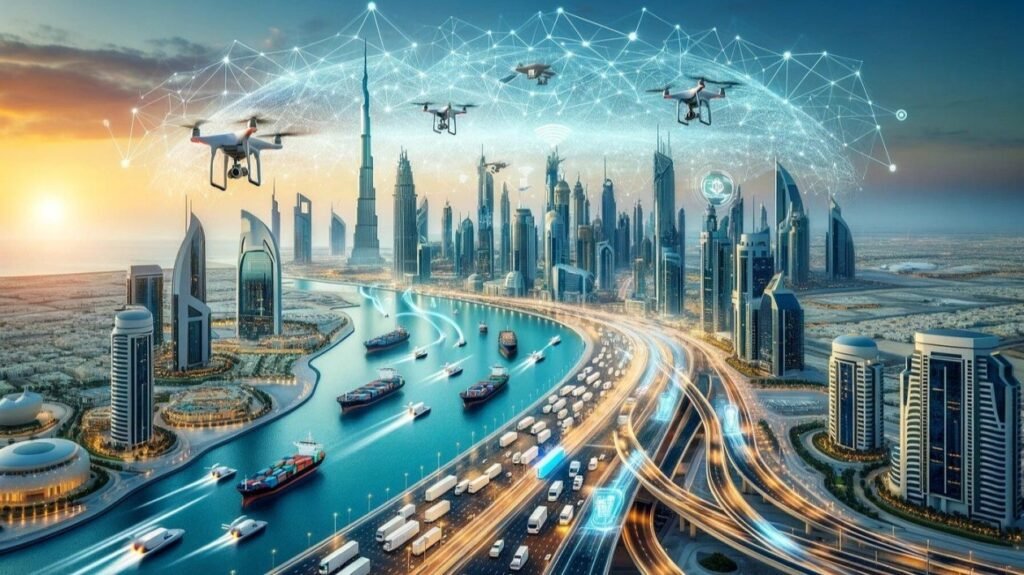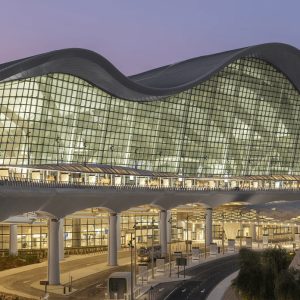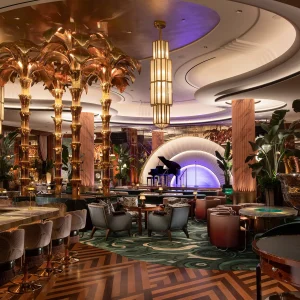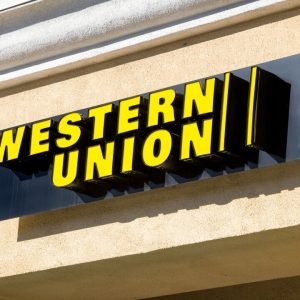Dubai has long been synonymous with ambition and rapid transformation. But today, it’s not just building skyscrapers—it’s rewriting the very blueprint of global trade. Through a dynamic blend of port infrastructure, free‑zone policies, cutting‑edge tech, and strategic partnerships, Dubai is emerging as the linchpin of tomorrow’s global commerce. What once was a desert town has become a logistics powerhouse, redefining how goods flow in a connected world.
1. Ports as Pillars: The Jebel Ali Story
At the heart of this trade metamorphosis lies Jebel Ali Port, the world’s largest man‑made harbor and the Middle East’s busiest container hub, handling over 13 million TEUs annually. Operated by DP World, Jebel Ali is more than a dock—it’s a living, automated ecosystem. With remote-controlled cranes, autonomous vehicles, and BOXBAY tower‑style storage systems, the port maximizes volume, minimizes delays, and operates around the clock.
The synergy between Jebel Ali and the Jebel Ali Free Zone (JAFZA) is unmatched—this integrated port–free‑zone model alone contributed a record $190 billion in trade last year, hosting over 11,000 companies and generating more than a million jobs. It’s the blueprint not only for Dubai’s own economic success but a template DP World is exporting globally—from Europe and India to Africa and the Americas.

2. Free Zones & Policies: Fertile Ground for Commerce
Dubai’s growth isn’t organic—it has been engineered through business‑friendly policies. Its designated free zones offer 0 % taxes, full repatriation of profits, and 100 % foreign ownership. JAFZA captures three‑quarters of Dubai’s foreign direct investment in trade, manufacturing, and transport, and it continues to expand internationally.
Beyond tax breaks, platforms like the Dubai Trade portal simplify customs, licensing, and approvals—all with just a few clicks. New Free Trade Agreements (FTAs) and economic partnerships (India, South Korea, Latin America, Africa) have further widened market access, making Dubai a preferred hub for global exporters and importers .

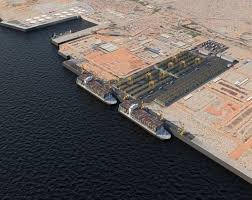
3. Tech-Driven Ports: Automation & Digital
Automation lies at the heart of Dubai’s logistics leap. From remote cranes at London Gateway to automated stacking, sensors, and cloud‑connected terminals, structural innovation has gone beyond buzzwords—that future is here .
BOXBAY, an 11‑story automated storage system, functions like a skyscraper-pallet model: it stores containers vertically, hosts robotic retrieval, saves land area, boosts safety, and cuts operational costs .
Digital tools are as transformative as physical ones. Dubai’s ports use AI for predictive vessel scheduling and fuel‑saving routing. Blockchain platforms secure and accelerate trade documentation—bills of lading, customs clearances—reducing fraud, processing time, and paper waste. IoT sensors monitor cargo health and equipment status, enabling maintenance before disasters hit .
4. Sustainability at Scale
Dubai isn’t sacrificing its environment for growth—it’s forging a green logistics paradigm. At Jebel Ali and Khalifa Ports, large-scale solar installations (88,000 solar panels producing ~35 MW) and shore‑power facilities reduce emissions by up to 98% . Electrified vehicles—automated guided ones and rubber‑tired cranes—slash diesel use by 4.5 million liters annually.
Beyond port gates, initiatives such as the Dubai Reef (600 km² marine revival project) and BioHuts nurture marine biodiversity. Even plastic reduction campaigns like “Dubai Can” have cut bottle waste by 18 million unit.
5. Strategic Reach: Beyond UAE’s Shores
DP World isn’t focused solely on local success—it’s global. It runs 82 terminals in over 40 countries, moving nearly 10% of global container traffic. In Africa alone, it operates several ports and logistics parks, reinforcing trade corridors with the UAE .
Despite periodic threats like Red Sea disruptions, DP World’s Middle East, Europe, and Africa revenues still rose 5.3%, prompting $2.5 billion investment in 2025 across Jebel Ali and London Gateway. It’s also eyeing Latin America—talks are underway to develop a Mexico free‑zone and port hub that could rival U.S. trade corridors .
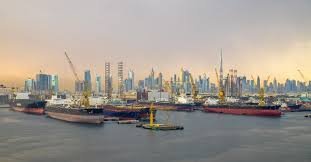
6. Policies Partnering Progress
Dubai’s trade-driven success rides on policy synergy:
- FTAs and CEPA deals (India, Indonesia, Israel) have slashed tariffs and fostered investment.
- Digital platforms support seamless onboarding for e‑commerce businesses—Dubai CommerCity accelerates online trade growth .
- Investments in education, logistics prowess, and maritime training ensure a skilled, future-ready workforce.
- Vision 2030 sets long-term ambitions for sustainability, automation, and global competitiveness .
In short: innovation happens because smart policies cultivate it.
7. Challenges Loom—but Resilience Reigns
No story of ambitious innovation is complete without challenges. Global trade tensions, geopolitical disruption, and security risks (e.g., Houthi Red Sea attacks) threaten smooth operations .
Profit dips—like DP World’s 28% annual drop in 2024—highlight how rising costs and instability can strain the logistics model. But investments haven’t slowed: billions continue to flow into ports and ports expansion. Meanwhile, digital risk management, diversified trade corridors, and robust infrastructure are turning vulnerability into resilience.
8. Humanizing the Future: People & Prosperity
Behind the steel and solar panels are real stories. Dubai’s population surged to 3.8 million in 2024, with infrastructure racing to keep pace. Nearly one million commute daily from neighboring emirates—filling offices, ports, and logistics hubs with an energy that powers the city’s dynamism.
Free‑zones host entrepreneurs from every background. From tech startups to commodity traders, they tap into Dubai’s ecosystem—where one platform, one pass, and one policy can launch something global.
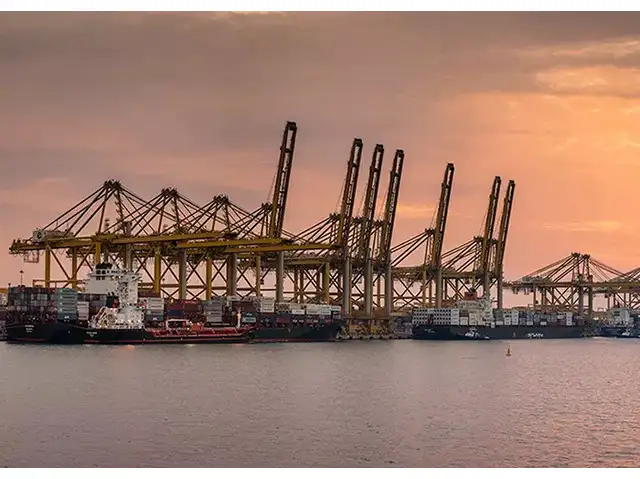
Conclusion
Dubai’s transformation—from ports to policies—is a masterclass in strategic design. It merges relentless infrastructure expansion, tech innovation, policy clarity, and environmental ambition. It spans oceans, spans continents—and, uniquely, spans disciplines: logistics, sustainability, diplomacy, technology, and skills.
It signals a new trade future rooted not just in volume, but in velocity, versatility, and values. As Dubai paves more digital lanes and launches deeper into green innovation, it isn’t just rewiring its own future—it’s building the blueprint for global commerce in a fast‑changing world.
Do follow UAE Stories on Instagram
Visiting Dubai in Summer? Your Ultimate Guide to Beat the Heat

